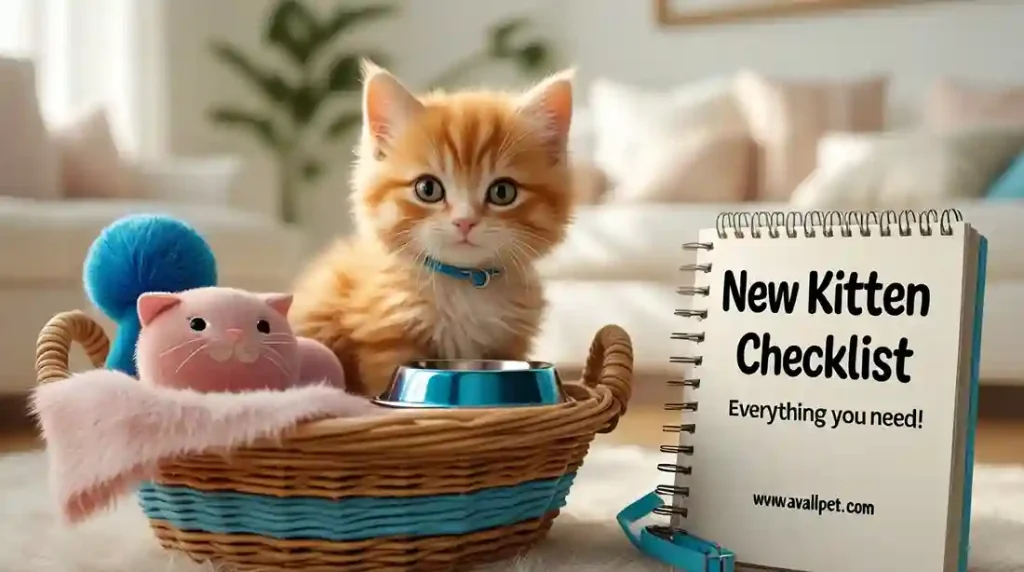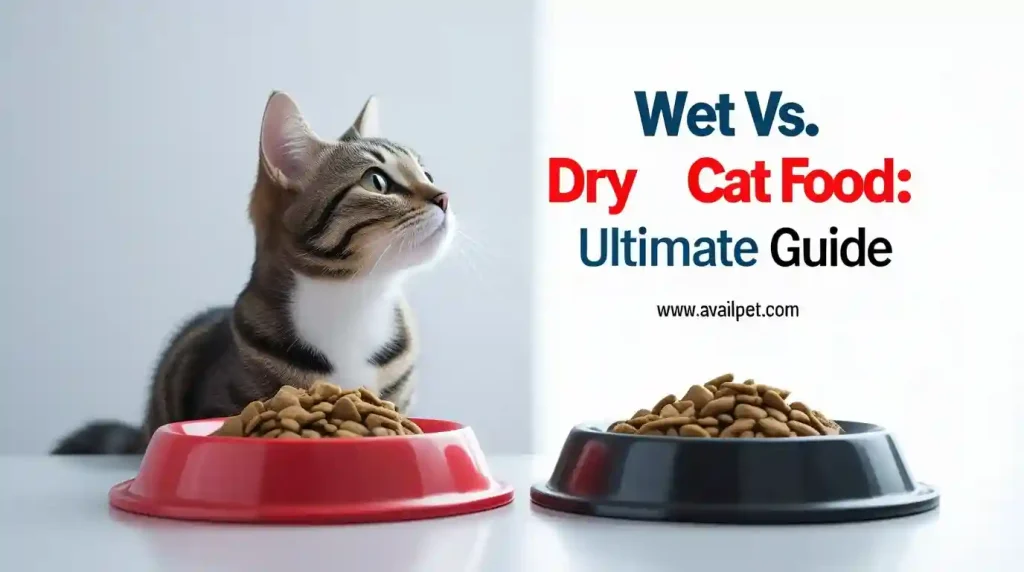Noticing a subtle change in your cat’s behavior or energy level can be the first sign that something is wrong. Feline Leukemia Virus (FeLV) is a serious disease that often begins with vague, easy-to-miss symptoms before progressing to more severe health complications. Understanding the feline leukemia symptoms to watch for can be the key to getting your cat the care they need at the earliest possible stage.
This guide provides a clear, vet-reviewed overview of both early and advanced FeLV signs in cats, empowering you to recognize potential warning signs and take appropriate action for your feline companion’s health.
Key Takeaways
Before we dive into the details, here are the most important points from our vet-reviewed guide:
- Early feline leukemia symptoms are often subtle and non-specific, including lethargy, weight loss, and a poor appetite.
- The virus progresses through stages, with advanced FeLV signs including recurrent infections, anemia, and certain cancers.
- Testing is essential, as some infected cats show no symptoms of feline leukemia for months or even years.
- Feline leukemia symptoms in cats can be managed with supportive care, but prevention through vaccination is the most effective strategy.
What is Feline Leukemia Virus (FeLV)?
Feline Leukemia Virus (FeLV) is a retrovirus that impairs a cat’s immune system and can lead to certain cancers. It’s one of the most common infectious diseases in cats, affecting between 2-3% of all cats in the United States. The virus is typically spread through close contact with infected cats—most commonly through mutual grooming, shared food/water bowls, and bite wounds. Kittens can also contract the virus in utero or through their mother’s milk.
FeLV works by invading cells and replicating within them, ultimately weakening the body’s ability to fight off other infections and diseases. This is why feline leukemia symptoms often include recurrent illnesses and secondary infections. While not all exposed cats develop permanent infections, those who do may experience progressive health decline over months or years.
Important Note: Vaccination offers crucial protection against FeLV. Learn more about when to vaccinate in our comprehensive Kitten Vaccination Schedule guide.
Feline Leukemia Symptoms at a Glance
FeLV symptoms vary depending on the stage of infection and the cat’s overall health. This quick-reference table helps you recognize both early warning signs and advanced symptoms that require immediate veterinary attention.
| Symptom Type | Early Stage Signs | Advanced/Late-Stage Signs |
|---|---|---|
| Energy Level | Mild lethargy, reduced playfulness | Extreme weakness, collapse, persistent hiding |
| Weight & Appetite | Gradual weight loss, picky eating | Severe wasting, complete appetite loss |
| Gum & Mouth Health | Slight paleness, mild gingivitis | Severe anemia (white gums), mouth ulcers, drooling |
| Coat Condition | Dull, unkempt fur due to reduced grooming | Patches of hair loss, scaly skin |
| Eyes | Minor discharge or squinting | Severe conjunctivitis, eye inflammation |
| Digestive Health | Occasional vomiting or diarrhea | Persistent vomiting, bloody diarrhea, dehydration |
| Respiratory Health | Occasional sneezing or nasal discharge | Chronic upper respiratory infections, labored breathing |
| Other Signs | Enlarged lymph nodes | Seizures, visible tumors or lumps, jaundice (yellowing) |
Detailed Symptom Breakdown
Understanding the progression of feline leukemia symptoms helps you recognize when your cat needs veterinary care. Here’s what to watch for at different stages:
Early/Non-Specific Signs
These subtle changes often appear 2-4 weeks after infection and may come and go:
- Lethargy & Weakness: Your cat sleeps more and shows less interest in play
- Weight Loss: Gradual but persistent weight loss despite normal eating
- Poor Appetite: Interest in food decreases, treats may be ignored
- Fever: Intermittent fever that doesn’t respond to usual care
- Pale Gums: Mild anemia causes noticeable paleness in gums and mucous membranes
Immune System Symptoms
As FeLV weakens the immune system, these signs typically appear within months:
- Recurrent Infections: Frequent respiratory, skin, or urinary infections that don’t fully resolve
- Slow Healing: Wounds take longer to heal, minor injuries become infected
- Persistent Diarrhea: Chronic digestive issues that don’t improve with diet changes
- Dental Disease: Severe gingivitis and tooth problems despite good care
Blood Disorder Signs
FeLV can cause serious blood abnormalities, usually within 6-12 months:
- Severe Anemia: Extreme weakness, rapid breathing, gum discoloration
- Bleeding Disorders: Unexplained bruising, nosebleeds, blood in stool
- Low Platelet Count: Excessive bleeding from minor injuries
Cancer-Related Symptoms
These typically appear in advanced stages, often 1-3 years after infection:
- Lymphoma: Enlarged lymph nodes, organ enlargement, weight loss
- Leukemia: Abnormal white blood cell production
- Visible Tumors: Lumps or masses that grow rapidly
- Neurological Signs: Seizures, behavior changes, vision problems
Monitor your cat closely and maintain a health journal to track any symptom patterns. Early detection of these FeLV signs in cats can significantly improve quality of life through proper management.
What to Do If You Notice Symptoms
If you observe any potential feline leukemia symptoms in your cat, prompt and appropriate action is crucial. Here’s a clear, step-by-step guide:
Isolate from Other Cats: If you have multiple cats, gently separate the symptomatic cat in a comfortable, quiet room with its own litter box, food, and water bowls. This prevents potential transmission to other felines while you assess the situation.
Do Not Panic, But Act Promptly: Remember that many FeLV symptoms can be signs of other, less serious conditions. However, because FeLV is a progressive disease, early veterinary consultation is key. Schedule an appointment with your veterinarian as soon as possible.
Prepare for Your Vet Visit:
- Track Symptoms: Keep a log of the specific symptoms, when they started, and their frequency. Note any changes in appetite, energy, litter box habits, or behavior.
- Gather History: Be ready to inform your vet about your cat’s lifestyle (indoor/outdoor), vaccination history, and any recent contact with other cats.
- Bring Records: If you have them, bring any previous health records.
Taking these steps ensures you provide your veterinarian with the best possible information for an accurate diagnosis and allows you to take proactive measures to protect your other pets.
Diagnosis and Testing Process
If your cat is showing feline leukemia symptoms, your veterinarian will recommend specific tests for an accurate diagnosis. Understanding this process can help you prepare and know what to expect.
Standard Testing Protocol:
- ELISA (Enzyme-Linked Immunosorbent Assay):
- What it detects: The presence of FeLV antigens (viral proteins) in the bloodstream.
- When it’s used: This is often the initial, in-clinic test. It can identify cats in the early stages of infection.
- Sample: Usually requires a small blood sample, with results available quickly.
- IFA (Indirect Immunofluorescence Antibody Assay):
- What it detects: The presence of the virus inside white blood cells, indicating a more established, progressive infection.
- When it’s used: This test is often used to confirm a positive ELISA result. It is typically sent to an external laboratory.
- Sample: Requires a blood sample.
Interpreting the Results:
- ELISA Positive, IFA Negative: May indicate an early infection. The cat might fight off the virus. Your vet will likely recommend retesting in a few weeks.
- ELISA Positive, IFA Positive: Confirms a persistent FeLV infection. The cat is likely to be infected for life and can transmit the virus to others.
Important Note: No test is 100% perfect. Your veterinarian will interpret the results in the context of your cat’s symptoms, health status, and history to provide a definitive diagnosis and discuss the next steps for care and management.
FAQs about feline leukemia symptoms
How long can a cat live with feline leukemia?
There’s no single answer, as it depends on the cat’s health, the stage of infection, and the quality of care provided. After a persistent diagnosis, some cats may live for several months, while others can live for several years. The focus shifts to maintaining a good quality of life through proactive veterinary care, a stress-free environment, and a nutritious diet.
Are feline leukemia symptoms treatable?
While there is no cure for the FeLV virus itself, many of the symptoms and secondary conditions are manageable. Treatment is supportive and may include antibiotics for recurrent infections, appetite stimulants, blood transfusions for severe anemia, and medications for specific cancers like lymphoma. The goal is to control illnesses as they arise and keep the cat comfortable.
Can FeLV be transmitted to humans or other pets?
No. The Feline Leukemia Virus is species-specific and cannot be transmitted to humans, dogs, or other non-feline pets. It is only contagious to other cats. Transmission requires close, social contact with an infected cat, such as mutual grooming, sharing food/water bowls, or through bite wounds.
What’s the difference between FeLV and FIV?
Both are retroviruses that suppress the immune system, but they are different.
- FeLV (Feline Leukemia): Often spread through friendly contact (grooming, shared bowls). It is more likely to cause cancer and severe anemia.
- FIV (Feline Immunodeficiency Virus): Typically spread through deep bite wounds. It progresses more slowly and is often referred to as “Feline AIDS.”
- A cat can be infected with both viruses, a condition known as “Feline Retrovirus Duo.”
Prevention and Next Steps
While managing feline leukemia symptoms is possible, prevention is always the best and most effective strategy for protecting your cat’s health.
Primary Prevention Methods:
- Vaccination: The FeLV vaccine is a core part of a complete preventive care plan, especially for outdoor cats or those in multi-cat households. It is highly effective in preventing infection and the subsequent development of feline leukemia symptoms. For the optimal timing, refer to our detailed Kitten Vaccination Schedule.
- Indoor Lifestyle: Keeping your cat strictly indoors is the single most reliable way to prevent exposure to FeLV, as it eliminates contact with potentially infected outdoor cats.
- Test and Separate: Any new cat or kitten entering your home should be tested for FeLV before being introduced to resident cats. If a cat in your household is diagnosed with FeLV, it should be separated from FeLV-negative cats to prevent transmission.
If Your Cat is Diagnosed:
A positive FeLV test is not an immediate death sentence. With proper care, many cats can enjoy a good quality of life for a significant time. Key steps include:
- Proactive Veterinary Care: Schedule vet check-ups at least twice a year to monitor for early signs of secondary diseases.
- Excellent Nutrition: Feed a balanced, high-quality diet to support the immune system.
- Reduce Stress: Maintain a calm, stable environment.
- Prompt Treatment: Address any minor health issues, like a small wound or a cold, immediately before they become serious.
Being proactive about prevention and informed about management gives your cat the best chance for a long, healthy, and happy life.
Final Thoughts
Recognizing the potential feline leukemia symptoms in your cat is a powerful and responsible step in safeguarding their wellbeing. While the prospect of a FeLV diagnosis can be frightening, knowledge is your greatest ally. Early detection of these signs—from subtle lethargy to more serious recurrent infections—empowers you to seek timely veterinary care, which is crucial for managing the condition and maintaining your cat’s quality of life.
Remember, prevention through vaccination and an indoor lifestyle remains the most effective strategy. If your cat is diagnosed, a commitment to proactive veterinary care, excellent nutrition, and a low-stress environment can make a significant difference. By staying vigilant and informed, you are providing the best possible care for your feline companion throughout their life.
Sources & References
This article was developed using authoritative veterinary resources including:
- American Association of Feline Practitioners (AAFP) Feline Retrovirus Guidelines
- Cornell Feline Health Center FeLV Resources
- VCA Animal Hospitals Medical Directors
- Journal of Feline Medicine and Surgery Peer-Reviewed Studies
All medical content has been reviewed by the AvailPet.com veterinary review board for accuracy and current standards of care.
Disclaimer: The information in this article is for educational purposes only and is not a substitute for professional veterinary advice. Always consult with a qualified veterinarian for any concerns about your cat’s health. If your cat is showing any signs of illness, please contact your veterinarian immediately.






